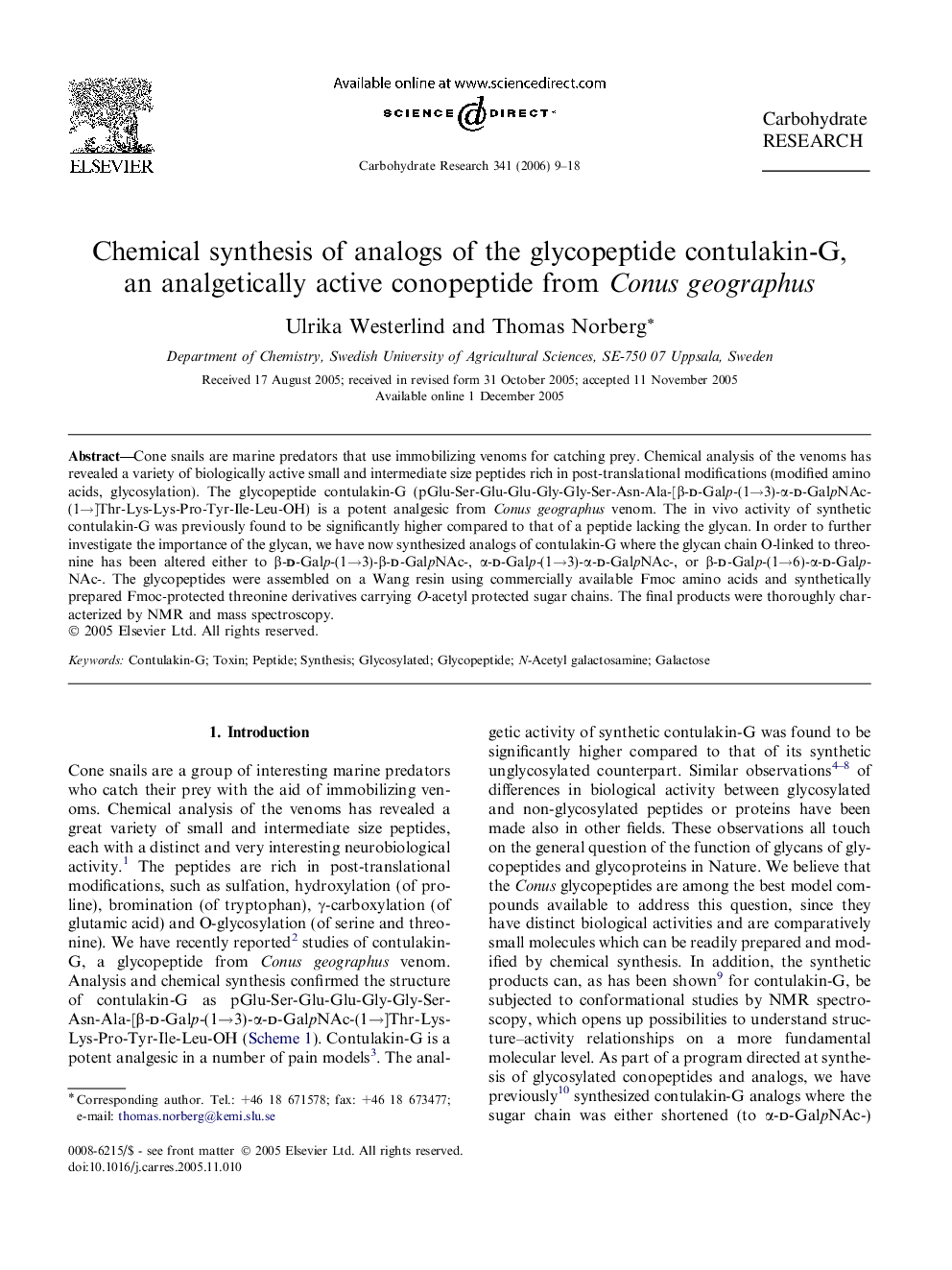| Article ID | Journal | Published Year | Pages | File Type |
|---|---|---|---|---|
| 1386078 | Carbohydrate Research | 2006 | 10 Pages |
Cone snails are marine predators that use immobilizing venoms for catching prey. Chemical analysis of the venoms has revealed a variety of biologically active small and intermediate size peptides rich in post-translational modifications (modified amino acids, glycosylation). The glycopeptide contulakin-G (pGlu-Ser-Glu-Glu-Gly-Gly-Ser-Asn-Ala-[β-d-Galp-(1→3)-α-d-GalpNAc-(1→]Thr-Lys-Lys-Pro-Tyr-Ile-Leu-OH) is a potent analgesic from Conus geographus venom. The in vivo activity of synthetic contulakin-G was previously found to be significantly higher compared to that of a peptide lacking the glycan. In order to further investigate the importance of the glycan, we have now synthesized analogs of contulakin-G where the glycan chain O-linked to threonine has been altered either to β-d-Galp-(1→3)-β-d-GalpNAc-, α-d-Galp-(1→3)-α-d-GalpNAc-, or β-d-Galp-(1→6)-α-d-GalpNAc-. The glycopeptides were assembled on a Wang resin using commercially available Fmoc amino acids and synthetically prepared Fmoc-protected threonine derivatives carrying O-acetyl protected sugar chains. The final products were thoroughly characterized by NMR and mass spectroscopy.
Graphical abstractFigure optionsDownload full-size imageDownload as PowerPoint slide
